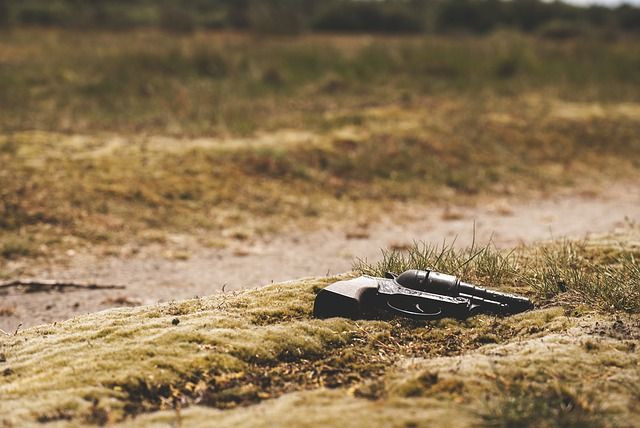States With More Gun Owners Also Have Higher Suicide Rates, Study Finds

Gun violence is an ongoing issue in the United States and one that gets put under the microscope every time a mass shooting occurs, which is all too often. Although homicide rates tend to be the focus of anti-gun rhetoric, guns are used even more frequently in suicides. The Centers for Disease Control and Prevention reported 21,175 firearm suicides in 2013 compared to 11,208 firearm homicides.
Researchers from the Boston University School of Public Health have finished a study comparing the link between gun ownership and suicide rates across the U.S. Their findings show that states with higher rates of gun ownership also have higher rates of gun-related suicides.
"Our study adds to the consistent finding that among both males and females, increased prevalence of firearms is clearly associated with an increase in the firearm-specific suicide rate," said Dr. Michael Siegel, lead author and a professor of community health sciences, in a statement. "The magnitude of this relationship is substantial and warrants attention from policymakers."
Siegel and his colleagues combed through over 30 years of data on gun ownership and gender-specific suicide rates in all 50 states between 1981 and 2013. The average percentage of gun ownership for all states was 41 percent, ranging from as low as 12.2 percent in Hawaii to as high as 72.8 percent in Wyoming.
Hawaii recorded the third-lowest suicide by firearm rate for males at 4.8 suicides per 100,000 people while Wyoming recorded the highest at 26.1 per 100,000. Massachusetts had the lowest rate of gun suicides for men at 4.2 per 100,000 and the second-lowest gun ownership rate. There was a noticeable disparity based on gender: Gun suicide rates among women were as low as 0.40 per 100,000 in New York and topped out at 4.2 per 100,000 in Nevada.
"Given that suicide is the 10th leading cause of death in the U.S., and firearm-related deaths and injuries are extraordinarily costly, reducing firearm-related self-injury and suicide is a public health imperative," said co-author Emily Rothman.
Gun ownership was a significant predictor of male firearm suicide rates. In fact, firearm suicides among men increased by 3.3 per 100,000 for each 10 percent uptick in gun ownership. Firearm suicides among women increased 0.5 per 100,000 for every 10 percent jump in gun ownership. Owning a gun also led to higher rates of suicide by any means among men but not women.
"Reductions in the prevalence of firearms may be an effective strategy for reducing overall and firearm-related suicides among males and for reducing firearm-related suicides among females,” the research team added.
Researchers from Johns Hopkins Center for Gun Policy and Research conducted a similar study that compared gun policies in Missouri and Connecticut, which passed a law in 1995 that requires people to pass a background check before obtaining a permit or license to purchase a handgun. Missouri, on the other hand, repealed its gun purchaser licensing law in 2007. Connecticut’s stricter gun ownership law led to a 15.4 percent drop in firearm suicides while Missouri’s laxer laws meant a 16.1 percent increase.
Source: Rothman E, Siegel M. Firearm Ownership and Suicide Rates Among US Men and Women, 1981–2013. American Journal of Public Health . 2016.



























